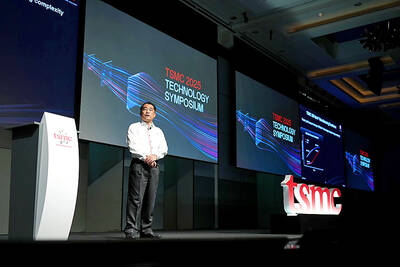American International Group Inc (AIG), which has lost billions on bad bets on the mortgage market, on Sunday named former Citigroup Inc executive Robert Willumstad to replace the insurer's besieged chief executive.
Willumstad, 62, will take over from Martin Sullivan, 53, effective immediately, the company said. Stephen Bollenbach, the former CEO of Hilton Hotels Corp, will be named AIG’s lead director.
AIG named Willumstad chairman of the board in fall 2006, about a year after Willumstad left his post as president and chief operating officer at Citigroup. Citigroup had passed him over for the CEO job — which went instead to the now-dethroned Charles Prince.
Sullivan, a native of England who had worked with AIG for 37 years, now joins the long list of CEOs who have been pushed out since the credit crisis started slamming the financial services industry last year. That list includes Citigroup’s Charles Prince, Merrill Lynch & Co’s Stanley O’Neal and Wachovia Corp’s Ken Thompson.
New York-based AIG — the world’s biggest insurer with US$1.05 trillion in assets — lost US$7.8 billion during the first quarter of the year because of investments and contracts tied to bad loans. The insurer’s first-quarter deficit was even more massive than its fourth-quarter loss of more than US$5 billion. After its two straight quarterly losses, AIG revealed plans to raise US$20 billion in fresh capital — but investors reacted skeptically, unsure that extra cash would solve the insurer’s problems.
“In the coming months, we will conduct a thorough strategic and operational review of AIG’s businesses and their performance,” Willumstad said in a statement on Sunday. “The Board and I recognize that results over the past two quarters have been unacceptable, but we are confident in AIG’s future.”
George Miles, Jr, chairman of the AIG board’s nominating and corporate governance committee, said Willumstad’s “broad managerial and financial services experience makes him the right person to lead AIG through today’s turbulent markets, drive further organizational change and rebuild shareholder value in the years ahead.”
The company said it would hold a conference call yesterday morning with investors to discuss the management changes.
Besides big losses, AIG is reportedly facing a regulatory probe.
The Securities and Exchange Commission reportedly began looking into whether AIG had overstated the value of contracts called credit default swaps.
Credit default swaps, or CDS, are essentially insurance policies that investors buy to protect against loan defaults, including subprime mortgage defaults. A surprisingly large US$9.1 billion loss in AIG’s CDS portfolio dealt the insurer its most significant blow during the first quarter.
Sullivan replaced Maurice “Hank” Greenberg as CEO in March 2005. Greenberg, forced out amid accusations from then-New York State Attorney General Eliot Spitzer of fraudulent accounting, still controls the largest block of stock in AIG.
Greenberg has been one of most outspoken of AIG’s shareholders, many of whom have blamed poor management for AIG’s financial troubles. In a regulatory filing last month, Greenberg wrote: “AIG is in crisis.”
Last August, shortly after mortgage-related losses began roiling the financial services industry, Sullivan told investors that AIG was “well-positioned, even in the event of further deterioration in this market.”
But by last month, Sullivan acknowledged that “the severity of the unrealized valuation losses and decline in value of our investments were beyond our expectations.”
News of Sullivan’s dismissal arrives ahead of this week’s quarterly results from three major investment banks: Lehman Brothers Holdings Inc, Goldman Sachs & Co and Morgan Stanley.
Wall Street expects the three reports to offer some insight into how the beleaguered financial sector is faring a year into the credit crisis — and whether additional management shake-ups may be in store.
“Boards of directors are becoming less tolerant, in general,” said Scott Fullman, director of derivatives investment strategy for WJB Capital Group in New York.
“The boards of directors of these companies are basically having to step up and be more anticipatory, and take steps to show their shareholders and show regulators that they mean business, and that they want to return to profitability,” Fullman said.

DEMOGRAPHICS: Robotics is the most promising answer to looming labor woes, the long-term care system and national contingency response, an official said Taiwan is to launch a five-year plan to boost the robotics industry in a bid to address labor shortages stemming from a declining and aging population, the Executive Yuan said yesterday. The government approved the initiative, dubbed the Smart Robotics Industry Promotion Plan, via executive order, senior officials told a post-Cabinet meeting news conference in Taipei. Taiwan’s population decline would strain the economy and the nation’s ability to care for vulnerable and elderly people, said Peter Hong (洪樂文), who heads the National Science and Technology Council’s (NSTC) Department of Engineering and Technologies. Projections show that the proportion of Taiwanese 65 or older would

Nvidia Corp yesterday unveiled its new high-speed interconnect technology, NVLink Fusion, with Taiwanese application-specific IC (ASIC) designers Alchip Technologies Ltd (世芯) and MediaTek Inc (聯發科) among the first to adopt the technology to help build semi-custom artificial intelligence (AI) infrastructure for hyperscalers. Nvidia has opened its technology to outside users, as hyperscalers and cloud service providers are building their own cost-effective AI chips, or accelerators, used in AI servers by leveraging ASIC firms’ designing capabilities to reduce their dependence on Nvidia. Previously, NVLink technology was only available for Nvidia’s own AI platform. “NVLink Fusion opens Nvidia’s AI platform and rich ecosystem for

Taiwan Semiconductor Manufacturing Co (TSMC, 台積電) yesterday said it is building nine new advanced wafer manufacturing and packaging factories this year, accelerating its expansion amid strong demand for high-performance computing (HPC) and artificial intelligence (AI) applications. The chipmaker built on average five factories per year from 2021 to last year and three from 2017 to 2020, TSMC vice president of advanced technology and mask engineering T.S. Chang (張宗生) said at the company’s annual technology symposium in Hsinchu City. “We are quickening our pace even faster in 2025. We plan to build nine new factories, including eight wafer fabrication plants and one advanced

‘WORLD’S LOSS’: Taiwan’s exclusion robs the world of the benefits it could get from one of the foremost practitioners of disease prevention and public health, Minister Chiu said Taiwan should be allowed to join the World Health Assembly (WHA) as an irreplaceable contributor to global health and disease prevention efforts, Minister of Foreign Affairs Lin Chia-lung (林佳龍) said yesterday. He made the comment at a news conference in Taipei, hours before a Taiwanese delegation was to depart for Geneva, Switzerland, seeking to meet with foreign representatives for a bilateral meeting on the sidelines of the WHA, the WHO’s annual decisionmaking meeting, which would be held from Monday next week to May 27. As of yesterday, Taiwan had yet to receive an invitation. Taiwan has much to offer to the international community’s